Bishop's Hat Epimedium × youngianum 'Niveum'

ABOUT
The plant commonly known as the White Flowering Bishop's Hat is a charming perennial mainly grown for its ornamental value, bearing distinctive heart-shaped leaves that often emerge with a reddish tint before maturing to a luscious green. Adding to its decorative nature, the plant showcases beautiful, delicate white flowers that resemble tiny, fluttering snowflakes. These blossoms are held aloft on wiry, branched stems above the foliage, creating a captivating and airy display. The leaves sometimes turn to an attractive bronze color in the fall, adding seasonal interest to garden spaces. This plant is appreciated for its enduring and resilient nature, thriving in various garden environments and providing a touch of elegance with its softly nodding flowers and layer of dense, attractive foliage.
About this plant
 Names
NamesFamily
Berberidaceae.
Synonyms
Bishop's Hat, Barrenwort, Fairy Wings, Horny Goat Weed.
Common names
Epimedium x youngianum 'Niveum'.
 Toxicity
ToxicityTo humans
Bishop's Hat is generally considered to be non-toxic to humans. There are no well-documented cases of poisoning from ingesting any part of the Bishop's Hat plant, and it is not generally considered to pose a threat to human health.
To pets
Similarly, Bishop's Hat is not known to be toxic to pets. There should be no symptoms of poisoning in pets such as cats and dogs from ingesting this plant, and it is generally considered safe around animals. However, as with any plant material, ingestion in large quantities could potentially cause mild stomach upset due to the fiber content or plant compounds, but this is not specific to toxicity.
 Characteristics
CharacteristicsLife cycle
Perennials
Foliage type
Deciduous
Color of leaves
Green
Flower color
White
Height
1 foot (30 centimeters)
Spread
1 foot (30 centimeters)
Plant type
Herb
Hardiness zones
5
Native area
Asia
Benefits
 General Benefits
General Benefits- Attracts Pollinators: Epimedium, commonly known as Bishop's Hat, is beneficial for gardens as it attracts bees and other pollinators which are essential for the pollination of many plants.
- Low Maintenance: Bishop's Hat is known for being low maintenance, requiring minimal care once established, which can save time and effort for gardeners.
- Drought Tolerance: It has the ability to withstand periods of dry weather once established, reducing the need for frequent watering and making it suitable for xeriscaping.
- Shade Tolerance: Bishop's Hat thrives in shaded areas where many plants cannot, providing greenery and color in otherwise challenging conditions for gardening.
- Pest and Disease Resistance: This plant is generally resistant to pests and diseases, which can mean fewer chemical treatments and a healthier garden environment.
- Ground Cover: Its dense foliage can help in covering bare spots in the garden, minimizing weed growth and reducing soil erosion.
- Seasonal Interest: Epimedium provides aesthetic benefits throughout multiple seasons with its flowers in spring and attractive foliage which can change color through fall.
- Wildlife Habitat: The dense foliage of Bishop's Hat provides shelter and habitat for small wildlife and beneficial insects within the garden ecosystem.
- Deer Resistance: The plant is not appealing to deer, which helps to protect it and surrounding plants from being eaten in areas with high deer populations.
 Medical Properties
Medical PropertiesThis plant is not used for medical purposes.
 Air-purifying Qualities
Air-purifying QualitiesThis plant is not specifically known for air purifying qualities.
 Other Uses
Other Uses- Epimedium × youngianum 'Niveum', commonly known as Bishop's Hat, can be used as a natural ground cover in shady woodland gardens, its dense growth habit suppresses weeds effectively.
- The plant's drought tolerance once established makes it suitable for use in rock gardens or xeriscaping in areas with partial shade.
- Bishop's Hat's foliage, which often changes color in fall, can be used to provide seasonal interest in garden designs.
- The flowers, which are white and delicate, can be used for ornamental purposes in floral arrangements and bouquets.
- The plant can be used to stabilize soil on slopes or banks, its root system helping to prevent soil erosion.
- It acts as a habitat for beneficial insects, providing cover and potential nectar sources early in the season.
- In larger landscapes, Bishop's Hat can be used to create a "living mulch" under trees and shrubs, conserving soil moisture and improving the overall aesthetic of the area.
- The plant is also utilized in fairy gardens or miniature garden scenes due to its small stature and attractive foliage and flowers.
- Leaves of Bishop's Hat can be used in crafts, such as pressed flower art, due to their interesting shape.
- The evergreen varieties of this plant offer year-round greenery in gardens, making them a valuable component in winter garden design.
Interesting Facts
 Feng Shui
Feng ShuiThe Bishop's Hat is not used in Feng Shui practice.
 Zodiac Sign Compitability
Zodiac Sign CompitabilityThe Bishop's Hat is not used in astrology practice.
 Plant Symbolism
Plant Symbolism- Sensual Pleasure: Epimedium, commonly known as Bishop's Hat or Fairy Wings, sometimes carries connotations of sexual pleasure and is linked to the Greek god Pan and the satyrs, both of which are associated with sensuality and male sexual energy.
- Longevity: In traditional Chinese medicine, Bishop's Hat is also known as "yin yang huo," which translates to "horny goat weed." It has been historically used as a tonic herb that may promote longevity and vitality.
- Protective Charm: The plant is thought to act as a protective charm due to its vigorous growth habits and its association with mythological protectors like Pan and satyrs.
- Adaptation and Survival: Due to its ability to grow in challenging conditions and its resilience, Bishop's Hat symbolizes adaptation and surviving through difficult circumstances.
- Hidden Desire: The heart-shaped leaves and delicate flowers are sometimes seen as symbols of hidden or forbidden desires, reflecting the plant's historical use as an aphrodisiac.
 Water
WaterBishop's Hat, commonly known as Epimedium × youngianum 'Niveum', thrives with consistent moisture, especially in dry periods. It should be watered thoroughly, allowing the soil to become moderately dry between waterings, roughly every week. During the growing season in spring and summer, this might mean watering with approximately one gallon per week, depending on climate and soil drainage. In the fall and winter, reduce watering to every other week or less, responding to reduced growth and evaporation rates. Over-watering can lead to root rot, so it's important to ensure the plant is not sitting in soggy soil.
 Light
LightBishop's Hat prefers partial to full shade and should be placed in a spot where direct sunlight is limited, as strong sun can damage the delicate foliage. A location under the dappled light of a tree canopy or on the north side of a building where it will receive filtered light throughout the day would be ideal. It’s tolerant of low-light conditions, making it suitable for woodland gardens and shaded borders.
 Temperature
TemperatureBishop's Hat does well in a wide range of temperatures, but it prefers a cooler climate with temperatures between 50°F and 75°F. It can survive temperatures down to around 20°F but should be protected from extreme cold and hot temperatures above 80°F for sustained periods. The plant is hardy enough to withstand frost without significant damage.
 Pruning
PruningPruning Bishop's Hat involves cutting back the tattered foliage in late winter or early spring before new growth starts. This encourages vigorous growth and a tidier appearance. It’s typically sufficient to prune once a year during this time frame. Removing spent flowers after blooming can promote a second flush of blooms but is not necessary for the health of the plant. Pruning also helps to maintain the desired shape and size of the plant.
 Cleaning
CleaningAs needed
 Soil
SoilBishop's Hat prefers moist, well-draining soil rich in organic matter with a pH between 6.0 and 7.0. A mix of loam, peat, and perlite can provide the ideal structure and fertility.
 Repotting
RepottingBishop's Hat typically doesn't require frequent repotting and can be done every 2-3 years or when the plant has outgrown its current container.
 Humidity & Misting
Humidity & MistingBishop's Hat thrives in average room humidity but can tolerate lower humidity levels without significant adverse effects; avoid overly dry air.
 Suitable locations
Suitable locationsIndoor
Place Bishop's Hat in bright, indirect light and ensure high humidity.
Outdoor
Plant Bishop's Hat in partial shade and shelter from strong winds.
Hardiness zone
5-9 USDA
 Life cycle
Life cycleEpimedium × youngianum 'Niveum', commonly known as Bishop’s Hat or Fairy Wings, typically begins its life cycle with seed germination in spring, after a period of cold stratification to break seed dormancy. Seedlings emerge and develop into juvenile plants, forming a basal rosette of heart-shaped leaves. As the plant matures, it enters the vegetative growth stage, spreading via rhizomes to form clumps. After a few years of vegetative growth, the perennial plant reaches maturity and blooms in late spring to early summer, producing small, white flowers. Following pollination, the flowers develop into dry, dehiscent capsules, releasing seeds that can contribute to the formation of new plants. The foliage may remain evergreen or die back in the winter depending on the climate, and during this dormancy period, the plant conserves energy for the next growing season.
 Propogation
PropogationPropogation time
Spring to early summer
The most popular method of propagation for Epimedium × youngianum 'Niveum', commonly known as White Flowering Bishop's Hat, is division. Division is best carried out in late summer to early fall, when the plant is not in active growth. To propagate by division, carefully lift the entire clump out of the ground using a spade. Gently tease apart the rhizomes, ensuring that each division has a good portion of roots and at least one growing point or bud. Replant the divisions at the same depth they were previously growing, spacing them about 12 inches (approximately 30 centimeters) apart to give them room to establish. Water the new divisions thoroughly to settle the soil around the roots and help reduce transplant shock. This method of propagation helps maintain the clonal integrity of 'Niveum' while also rejuvenating older clumps that may have become overgrown or less vigorous.

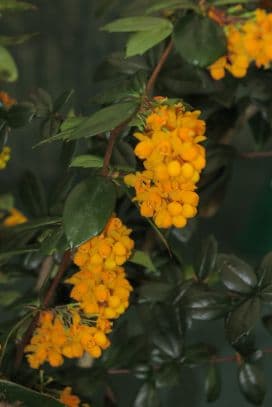
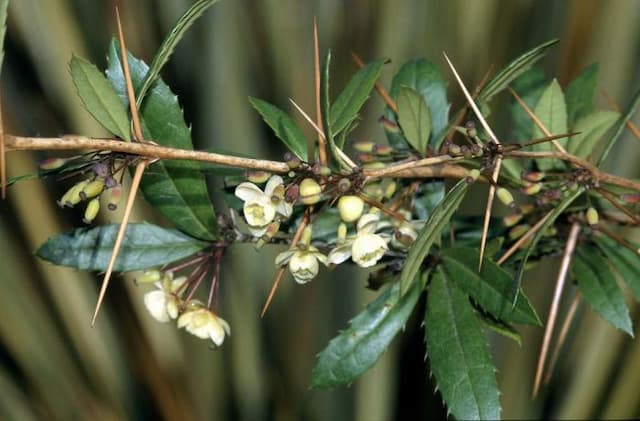
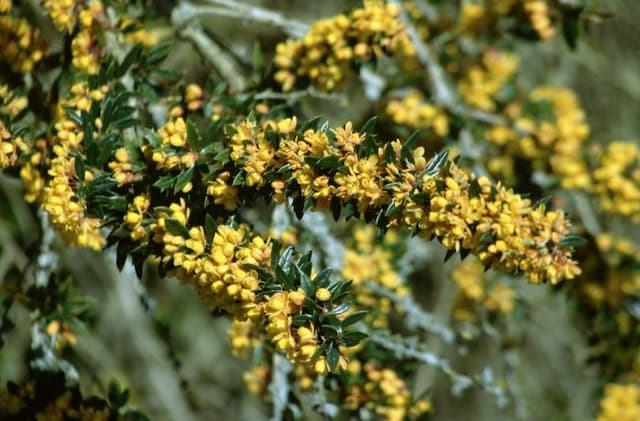
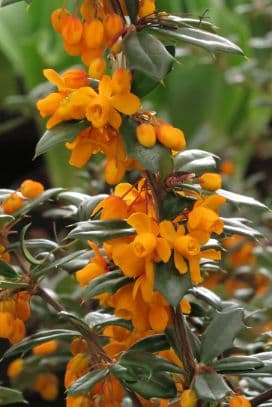
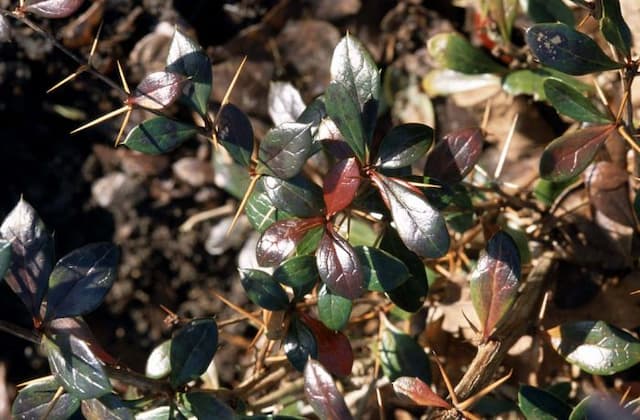


![Japanese barberry [Bonanza Gold]](/_next/image?url=https%3A%2F%2Fplants-admin.emdemapps.com%2Fimages%2Fplants%2F%2Fimages%2F604b5385e413f.png&w=640&q=75)
